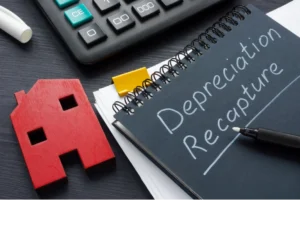What is Rental Verification and How to Screen Potential Tenants
A considerable part of renting out a property is pre-screening to find reliable tenants. Tenants who do not fulfill their rental obligations by failing to pay the rent on time or cause damage to your property can quickly slash your profits, as well as cause a considerable number of legal headaches.
One crucial aspect of any tenant outreach campaign is the rental application. These standardized forms enable you to learn about prospective tenants before taking their applications further.
This post will delve into the basic rental application form, its purpose, and what one should look like.
What is a Rental Application?
 A rental application form is a document used by either a landlord directly or their property manager to pre-screen potential tenants who have shown interest in renting your property.
A rental application form is a document used by either a landlord directly or their property manager to pre-screen potential tenants who have shown interest in renting your property.
Your standard tenant application will look at the following areas to determine whether someone is suitable to rent one of your units:
- Basic personal information
- Information on their household
- Rental history
- Current employment/income
- Basic background information
Landlords and their property management team will review each tenant application form to determine the ideal prospect. Remember that you must comply with Fair Housing Laws when assessing each application.
Why Should You Use Rental Applications?
The tenant application form is a crucial aspect of the tenant screening process. You can gain critical information about each applicant with this simple form.
By looking at criminal history, employment, and income, you can ascertain whether the applicant is likely to be a good tenant.
Another reason you should have an application form for potential renters is to save you time. Hot markets may lead to countless applications from interested parties. The tenants’ information can help you quickly create a shortlist of people to perform background checks.
While many successful landlords have no standardized application process, it can be beneficial.
There is no requirement to use a rental application form as part of your tenant screening process. Unfortunately, gut feelings are not a substitute for hard data. Encouraging tenants to fill in a simple rental application increases the likelihood of choosing a tenant who will consistently pay the rent on time.
What is the Rental Application Fee?
Based on figures from the Zillow Group Consumer Housing Trends Report 2019, the average fee paid when submitting rental applications was $50. These fees cover the costs of running financial and criminal background checks.
States differ on how much landlords can charge, whereas others require landlords to refund application fees to tenants who were not selected to rent the property.
Seek professional guidance on charging application fees and whether you will be required to provide refunds to specific tenants.
Fees are typically paid via a credit or debit card, but there are no laws against submitting application fees with cash or check.
What Information is Included in a Rental Application Form?
Any free rental application form will always ask for specific information. The standard rental application template rarely differs. It’s always a good idea to use a simple rental application, as more complex ones may deter otherwise great tenants from applying in the first place.
Seven major sections populate the standard rental application PDF you might find online, including:
- Personal Information – Basic details about the tenant, such as their name, email, phone number and Social Security Number.
- Household Information – Who is going to be living at the address? Does the tenant want to bring their pets?
- Residential History – The tenant’s residential history from the past three years. It should include dates of residence and contact details of previous landlords if any.
- Employment and Income – Information regarding the tenant’s current employment and income. Must include contact details from their company.
- Background Information – Information about criminal records or any recent bankruptcies.
- Disclosure – Landlord’s disclosure regarding application deposits and compliance with housing laws.
- Signature – All application forms must be signed and dated.
These seven aspects of your application form are essential to uncovering information about your tenant and ensuring you are covered legally in the event of a dispute. This exploratory form is merely the basis of your tenant pre-screening process.
How to Create a Rental Application Template
The point of a rental application template is to ensure a standardized process every time you need to search for a new tenant.
By guaranteeing consistency, you save time and make the process of finding someone else to fill a vacant property simple.
Personal Information
All forms will ask for the tenant’s personal information, such as their name, email, phone number, and, occasionally, emergency contact details.
Due to Fair Housing Laws, you cannot ask for the tenant’s age on your application form. Age is a protected class and asking for a date of birth could open you up to legal action due to age discrimination.
Household Information
Household information will include who intends to live in your property. Some examples of household information could consist of information about a spouse, in-laws, or children.
Always include a section about pets. With so many renters wanting to live with their pets, you should establish whether pets are welcome in your rental property.
Residential History
All tenants must disclose their residential history from the last three years. This includes rentals, owned properties, or alternative living situations.
Tenants should disclose the dates they were present there, how much rent they paid, contact information for previous landlords, and their reasons for moving.
Employment and Income Information
Your rental application should request information about the potential tenant’s employment and current income.
Essential pieces of information should include:
- Current employer’s name and contact details
- Job titles
- Monthly income
- Length of employment
- Secondary income streams
You may only contact the tenant’s current or last employer if the applicant gives permission, so make sure you leave a box to check if they do give their consent.
Background Information
The background information section will include some simple yes/no questions relating to subjects like whether the tenant is a smoker, whether they were evicted from a previous rental, or if they filed for bankruptcy at any time within the last seven years.
Disclosure
According to current laws, you can only run background and credit checks with the applicant’s consent. Your disclosure should also comply with landlord-tenant laws, the Fair Credit Reporting Act, and any relevant fair housing laws within your state.
It must also state the application processing fee, if that fee is refundable, and the holding deposit paid by the applicant if this is relevant to you.
Finally, make sure your rental applications are appropriately signed and dated.
Tenant Screening Explained
What happens after you receive rental applications from a selection of tenants? What are the next steps to selecting the right tenant?
Tenant screening could make or break your rental business. Poor quality tenants can be a nightmare, and legal action often takes months. Make the right decision early by refining and streamlining your tenant checks.
Follow these steps to launch your tenant screening process.
Step One – Run a Background Check
You can be liable if violence, disruption, or illegal activity occurs on your property. Cover yourself by performing a background check on your tenants. Take note; you must receive consent in advance in order to complete the tenant screening report.
Consent can be a requirement of renting one of your properties, and most landlords demand it.
Step Two – Run a Credit Check
The results of a credit check will enable you to see to whom the applicant owes money, if they pay their bills on time and whether they have been put in collection. (By law, the credit history of an individual is limited to the last seven years.)
Credit checks will also reveal any history of bankruptcy, eviction, and whether they were truthful about their previous residences. All of this information is vital so that property management can make an educated decision about renting to the applicant.
Step Three – Verify Employment and Income
Call the tenant’s employer to confirm the information they provided on their application regarding their employment and their stated income.
Another option is to request that the tenant shows a recent pay stub.
Step Four – Consult Former Landlords
Discover more about the type of tenant the applicant is by getting in touch with their previous landlord.
Did they consistently make rent? Did they take care of the property? Would the landlord rent to them again in the future?
If you cannot contact the most recent landlord, contact the one before that. The more second opinions you can get, the more confident you will feel about renting to that applicant.
Step Five – Choose Your Tenant
Based on the applications received and the results of your screening process, select a tenant. Ensure you comply with Fair Housing Laws to confirm you are not discriminating based on protected characteristics, such as age, gender, or sex.
Once you have decided on a tenant, create your rental lease agreement. Both parties should sign this document before the renter pays a security deposit and you hand over the keys.
Conclusion
The rental application is the basis of the pre-screening process. You can save a lot of time and effort by filtering candidates at this early stage. You may receive hundreds of rental applications for a single property, particularly in hot markets. These forms can help you create a shortlist.
Performing background and credit checks are time-consuming and stressful. Get help with tenant screening and take advantage of other valuable resources by joining the American Apartment Owners’ Association now.













 Accessibility
Accessibility